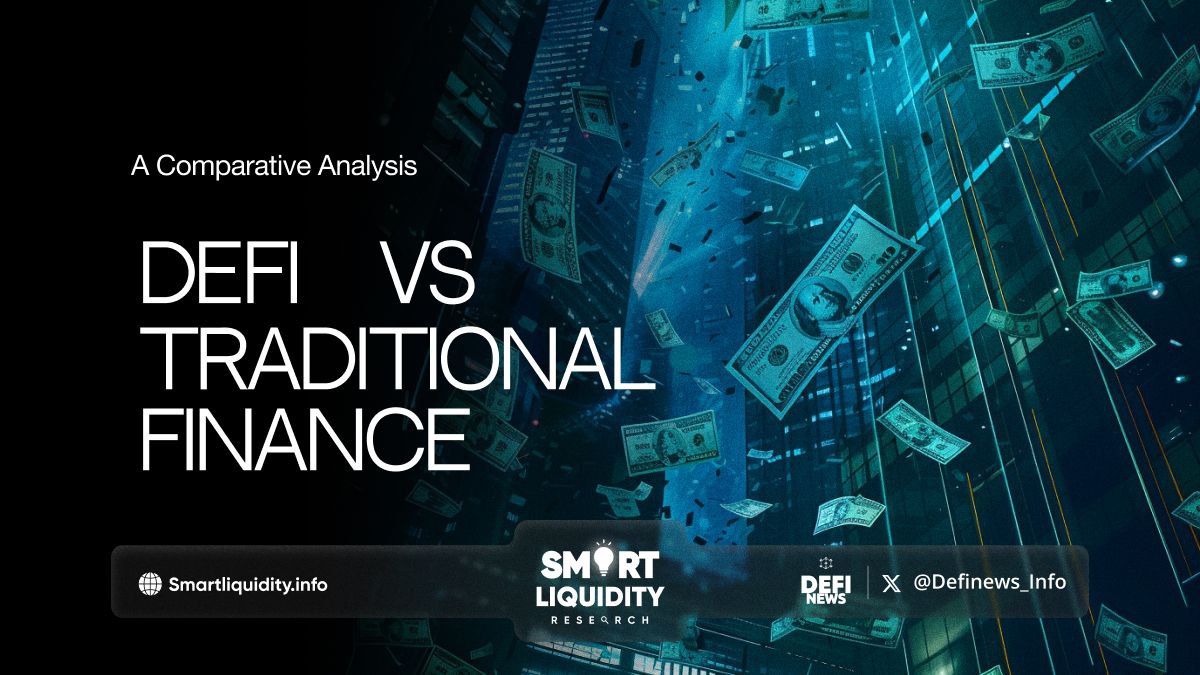DeFi vs. Traditional Finance: A Comparative Analysis


DeFi vs. Traditional Finance: A Comparative Analysis. In the rapidly evolving financial landscape, the emergence of Decentralized Finance (DeFi) presents a paradigm shift from traditional monetary systems.
This comparative analysis explores the core differences, advantages, and challenges of DeFi and traditional finance.
Traditional Finance
Traditional finance, also known as centralized finance, operates through established institutions such as banks, credit unions, and stock exchanges.
Here are some key characteristics:
- Centralized Control
Financial transactions and operations are controlled by centralized institutions, ensuring regulatory compliance and oversight. - Intermediaries
Transactions often involve multiple intermediaries, including banks, brokers, and clearinghouses, which can increase costs and processing times. - Accessibility
Access to financial services can be limited by geographical location, socio-economic status, and regulatory frameworks, often excluding a significant portion of the global population. - Regulation and Security
Traditional finance is heavily regulated, providing a higher level of security and consumer protection but often at the cost of flexibility and innovation.
Decentralized Finance (DeFi)
DeFi leverages blockchain technology to create an open and permissionless financial system. Here are its defining features:
- Decentralization
DeFi operates on blockchain networks, eliminating the need for intermediaries. Smart contracts automate and secure transactions, ensuring transparency and trustlessness. - Accessibility
DeFi platforms are accessible to anyone with an internet connection, offering financial services to the unbanked and underbanked populations globally. - Innovation
The DeFi ecosystem is rapidly evolving, with new financial products and services emerging frequently. This fosters a culture of innovation and experimentation. - Risks and Challenges
While DeFi offers numerous advantages, it also comes with risks. Smart contract vulnerabilities, regulatory uncertainty, and the potential for market manipulation are significant concerns.
Comparative Analysis
- Efficiency and Cost
🚨 Traditional Finance: Transactions can be slow and costly due to the involvement of intermediaries.
🚨 DeFi: Transactions are faster and cheaper, as they are executed directly on the blockchain without intermediaries. - Transparency and Trust
🔥 Traditional Finance: Relies on trusted institutions and regulatory frameworks to ensure security and compliance.
🔥 DeFi: Utilizes transparent blockchain technology, where all transactions are publicly verifiable, enhancing trust through decentralization. - Accessibility and Inclusivity
💥 Traditional Finance: Limited by physical presence and regulatory requirements, often excluding marginalized groups.
💥 DeFi: Offers global accessibility, breaking down barriers to financial services for millions of people worldwide. - Innovation and Flexibility
🟧 Traditional Finance: Innovation can be slow due to regulatory constraints and the conservative nature of financial institutions.
🟧 DeFi: Encourages rapid innovation, with new financial instruments and platforms emerging frequently.
In Summary
Both traditional finance and DeFi have their unique strengths and weaknesses. Traditional finance offers security, regulation, and trust through established institutions but often lacks efficiency and inclusivity. DeFi, on the other hand, provides a decentralized, transparent, and accessible financial system but comes with its own set of risks and regulatory challenges.
As the financial landscape continues to evolve, a hybrid approach that combines the strengths of both systems may emerge, providing a more efficient, inclusive, and secure financial ecosystem. Whether DeFi will fully replace traditional finance or coexist alongside it remains to be seen, but its impact on the future of finance is undeniable.
REQUEST AN ARTICLE
DISCLAIMER
“The information provided on this platform is for general informational purposes only. All information on the platform is provided in good faith; however, we make no representation or warranty of any kind, express or implied, regarding the accuracy, adequacy, validity, reliability, availability, or completeness of any information on the platform.”




